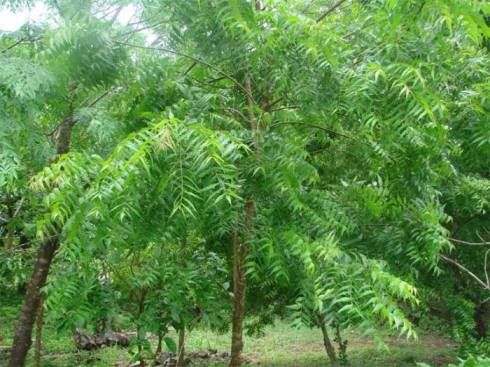 It has been announced by The NT Weeds Branch that Neem (Azadirachta indica) is being declared a weed.
It has been announced by The NT Weeds Branch that Neem (Azadirachta indica) is being declared a weed.
This well know tree, prized in Asia as an insecticide which is becoming a well distributed plant, out competing our native trees in the rural area and beyond, particularly by waterways. I have seen it on quite a few LFW assessments and many land holders are not entirely sure what it is, so I thought I would post this information. The fruit is eaten and spread by birds.
Below is some information provided by the weeds branch and some FAQs-
The NT Government (weeds branch) has formulated a draft weeds management plan, it is available at http://www.lrm.nt.gov.au/weeds/find/neem, the plan is open for comment and you contact the department for more information.
What does the Weed Management Plan do?
Weed Management Plans establish the management requirements that must be undertaken by land managers with respect to declared weeds. They also describe best management practice control options. The Weed Management Plan for Neem (Azadirachta indica) will form part of a strategic approach to weed management in the Northern Territory, with the overall aim being to negate the impact of neem on the natural environment and the Northern Territory economy.
What is neem and why was it declared as a weed in the Northern Territory?
Neem is a fast growing introduced tree that is rapidly establishing in Top End waterways including the Katherine River. Neem’s high levels of seed production, extensive root systems and ability to regrow from suckers has enabled it to aggressively compete with native plants, even in healthy, intact environments. In July 2014, neem was declared a Class B (growth and spread to be controlled) and Class C (not to be introduced to the NT). Since the declaration of neem as a weed, it has been encouraging to see the amount of control that has taken place to date, however there is still more to do.
If I have neem on my property am I obligated to control it?
Landholders must use their best endeavours to control the growth and spread of neem, this includes controlling seedlings, saplings and, where feasible, mature trees. Although not required by the Plan, the removal of mature trees from urban settings is considered highly beneficial as this removes a source of neem seeds. It is illegal to buy, sell or transport neem plants of seeds and no new plantings are permitted within the Northern Territory.
How difficult is neem to control?
The management of isolated neem plants and small infestations can be relatively straightforward. However, the control of large established infestations will require careful planning, prioritisation and budgeting. Results may not be immediately apparent, as repeated effort may be required to produce obvious reductions in distribution and density.
Where can I find a copy of the Plan and/or make comment?
The draft Plan can be found on http://www.lrm.nt.gov.au/weeds/find/neem and online feedback form http://www.lrm.nt.gov.au/lrm/community-consultation or by calling Weed Management Branch on 8999 4567 for a hard copy.
A summary paper has also been written to identify the key objectives of the Plan. Written submissions can be sent to to: Weed Management Branch Department of Land Resource Management PO Box 496 Palmerston NT 0831 Or emailed to weedinfo@nt.gov.au Darwin Jabiru Yulara Katherine Three Ways Alice Springs Tennant Creek Management Zone (Class B/C) http://www.nt.gov.au/weeds Management Zone What happens to my comments/feedback? The draft Plan will be available until Friday 17 April 2015. Comments received during this time will be taken into consideration when developing the final Weed Management Plan, which will then be sent to the Minister for Land Resource Management for approval in accor




